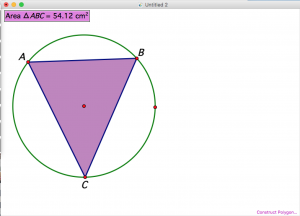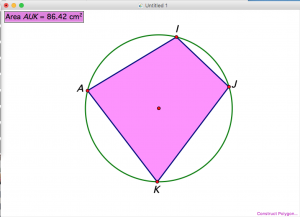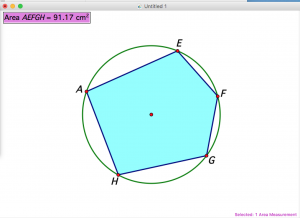I know I am not fully in line with the instructions, but I would like to focus my post on the benefits of simulation compared to reality. Some of the readings of this week discussed this topic, and I found this question quite fascinating, as the answer will guide the decision on whether using simulation in the classroom or not.
Simulations are based on models. Models are normally understood as simplified representations of a reality (of what the modeler understands as reality), in order to be able to focus on those issues that the modeler finds most important (Winter&Haux, 2011). Thus, in this definition, simulations simplify the reality with the intention to help students learn.
Indeed, students may learn better in simplified, “constrained” environments (Finkelstein, 2005). Why is this? First, simulations may offer “visual clues”, making concepts visible that would otherwise be invisible (such as the flow of electrons in a wire) (Finkelstein, 2005). Second, a simulation avoids any distraction of students that may interfere with successful learning (e.g. no misunderstanding of different colors of wire), instead helps to focus the student on the relevant details (Finkelstein, 2005). Third, in a simulation variables can be changed much more easily than in a real lab situation. Fourth, a simulation is less expensive than real lab classes, especially for large number of students (Srinivasan, 2006).
Yet, as Finkelstein (2005) notes, this may stand in contrast to the “conventional wisdom” that students may learn most with hands-on experience. He thus conducted an experiment: Two groups of university students attending a physics course were compared regarding their mastery of physical concepts. One group used real lab equipment to learn about electron flow, the other group used simulation (the PhET Circuit Construction Kit). Overall, 231 students participated in the experiment. Data was collected by the researchers via observation of the sessions, analysis of lab documentation, time needed to solve the lab exercises, and performance on selected questions in the final exams. Results show that the simulation group outperformed the lab group both in understanding of the physical concepts as well as in their ability to describe their circuit. The authors conclude that simulation can replace traditional real lab. However, they also discuss that simulations are not “the magic bullet”, and that they do not proposed to skip all lab classes. But still, they argue, there is a place for simulations in university education, and depending on the context, the outcome may be better compared to traditional labs.
Interestingly, students themselves may prefer real lab versus simulation. In another study, undergraduate and graduate students that worked with a simulation were studied (Srinivasan, 2006). All students were exposed both to MatLab-based simulation and to traditional lab classes. No differences in learning outcome could be detected (Srinivasan, 2004). A smaller number of students were also interviewed. Interviews showed that a majority of the students perceived the software simulation as a kind of “fake” (Srinivasan, 2006, p. 137). More than half of the students would have preferred “real” lab classes.
What is my summary: Simulations have their place and can lead to even better learning than traditional labs. Yet, students in certain contexts may consider simulations as “not real” and not “authentic” (Srinivasan, 2006).
Question: Did you observe an impact of simulations on learning, compared to traditional lab-based teaching?
References:
Finkelstein, N.D., Perkins, K.K., Adams, W., Kohl, P., & Podolefsky, N. (2005). When learning about the real world is better done virtually: A study of substituting computer simulations for laboratory equipment. Physics Education Research,1(1), 1-8.
Srinivasan, S., Perez, L. C., Palmer,R., Brooks,D., Wilson,K., & Fowler. D. (2006). Reality versus simulation. Journal of Science Education and Technology, 15 (2), 137-141.
Srinivasan, S. (2004). Implementation of an integral signals and systems laboratory in electrical engineering courses: A study. MA, University of Nebraska, Lincoln.
Winter, A., Haux, R (2011). Health Information Systems. 2nd edition. New York: Springer.


